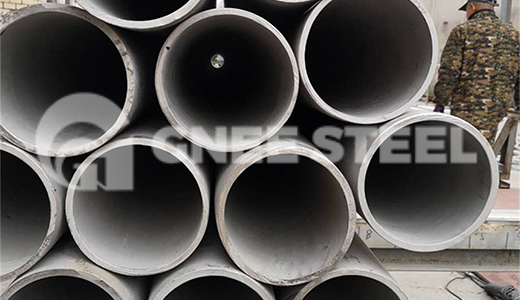At temperatures between approx. 350°C and approx. 1000°C, intermetallic phases precipitate, leading to embrittlement of the material at room temperature. To avoid precipitation of intermetallic phases in the high temperature range (about 600-1000°C), a rapid cooling process can be used.
In contrast, precipitation of intermetallic phases in the low-temperature range (approx. 350-600°C) is slower and does not usually pose a problem for metal processing (welding, heat treatment, etc.). However, for working temperatures in the 250-350°C range (which usually occurs in the chemical industry), the situation is different. If left in this temperature range for thousands of hours, combined with transients, cryogenic precipitation can occur, so the designer must know the limit range. Higher levels of chromium, molybdenum, copper and tungsten, for example, can increase the rate of precipitation power. Therefore, it is generally accepted that lean duplex stainless steels are more resistant to cryogenic precipitation than super and extra super duplex stainless steels.
Pressure vessel codes have specified maximum service temperatures as follows.
The European Norm EN 13455 limits the maximum service temperature to less than 250°C. This is a rather conservative specification. This is a fairly conservative specification.
ASME Standard No. 8, Part 1 limits the service temperature of most steels to below 316°C. All of these specifications have a warning message that embrittlement of the steel may occur if the temperature is higher than 260°C.

Unlike austenitic stainless steels, duplex stainless steels undergo a tough-brittle transition with decreasing temperature, evidenced by a reduction in impact resistance (usually measured using Charpy impact values). This limits the use of duplex stainless steels to low temperature applications. As for the lowest temperature at which a duplex stainless steel can be used, this is set by the lowest required impact value.
However, there are a number of adjustments that can be made to improve the impact resistance of duplex stainless steels at low temperatures.
Moderate reduction of ferrite content through chemical composition adjustment
.jpg)
- Optimisation of forging/hot rolling
Optimisation of heat treatment
Duplex stainless steels fulfil the requirements of international standards (e.g. ASTM, NACE and Norsok), which specify a minimum Charpy KV impact value of 45 J at -46°C. The impact resistance of duplex stainless steels can be improved by adjusting the chemical composition, moderately reducing the ferrite content and optimising heat treatment.
In recent years, the Arctic requirements for service temperatures as low as -80°C have led to further optimisation of duplex stainless steels, with a Charpy impact value of 200 J at -100°C. Typically, weld properties determine the minimum service temperature.

.jpg)